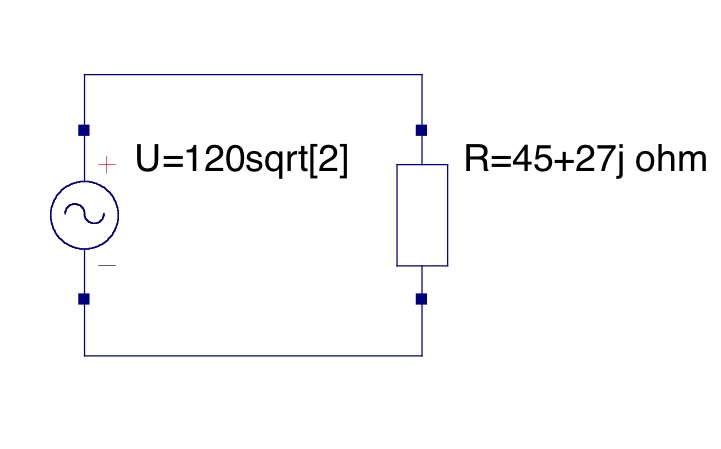An Ideal Transformer Example: Difference between revisions
Jump to navigation
Jump to search
No edit summary |
|||
| Line 7: | Line 7: | ||
<math>\ {e_{1}}(t)={V_{1}}\cos(\omega t)</math> and <math>\ \omega=2\pi f</math> |
<math>\ {e_{1}}(t)={V_{1}}\cos(\omega t)</math> and <math>\ \omega=2\pi f</math> |
||
Substituting <math>\ f = 60Hz, <math>\ \omega=120\pi</math> |
Substituting <math>\ f = 60Hz</math>, <math>\ \omega=120\pi</math> |
||
Therefore, <math>\ {e_{1}}(t)=120\sqrt{2}\cos(120\pi t)V</math> |
Therefore, <math>\ {e_{1}}(t)=120\sqrt{2}\cos(120\pi t)V</math> |
||
Revision as of 10:48, 21 January 2010
Consider a simple, transformer with two windings. Find the current provided by the voltage source.
- Winding 1 has a sinusoidal voltage of ° applied to it at a frequency of 60Hz.
- The combined load on winding 2 is
Solution
Given: and
Substituting ,
Therefore,
Now the Thevenin equivalent impedance, , is found through the following steps:
Now, substituting:
Since ,
Since this is an ideal transformer, it can be modeled by this simple circuit:

Contributors
Reviwed By
Andrew Sell - Chris, everything looks fine, though I would do some extra formatting if possible to help make the problem flow a little smoother as you read it, and locate the picture a little higher to help bring the solution together.
Read By
John Hawkins















